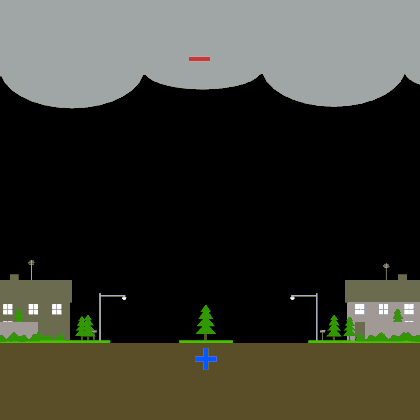
There are news reported that there are several lightning strikes incidents recently here in Philippines especially in Pangasinan. That’s why I decided to make a post regarding this matter. My topic is focusing more on “How to avoid lightning strikes”. This will serves as guidelines for our Kababayans in order to avoid this deadly lightning strike.
Lightning strikes are electrical discharges caused by lightning, typically during thunderstorms. Lightning is one of the most underrated severe weather hazards, yet ranks as the second-leading weather killer and more deadly than hurricanes or tornadoes.
You will easily know that Lightning will be occur if there is high winds, rainfall, and a darkening cloud cover . If you can see lightning or hear thunder, the risk is already present. Louder or more frequent thunder means lightning activity is approaching, increasing the risk for lightning injury or death. If the time delay between seeing the lightning and hearing the thunder is less than 30 seconds, you are in danger.
How Lightning Works?
Lightning is caused by the attraction between positive and negative charges in the atmosphere, resulting in the buildup and discharge of electrical energy. This rapid heating and cooling of the air produces the shock wave that results in thunder. During a storm, raindrops can acquire extra electrons, which are negatively charged. These surplus electrons seek out a positive charge from the ground. As they flow from the clouds, they knock other electrons free, creating a conductive path. This path follows a zigzag shape that jumps between randomly distributed clumps of charged particles in the air. When the two charges connect, it will create the lightning bolt.
Safety Tips:
1.If a storm is approaching, avoid being in, or near, high places, open fields, isolated trees, unprotected gazebos, rain or picnic shelters, baseball dugouts, communications towers, flagpoles, light poles, bleachers (metal or wood), metal fences, convertibles, golf carts and water. No place is absolutely safe from the lightning threat, however, some places are safer than others. Large enclosed structures are safer than smaller, or open, structures.
2.avoid using the telephone, taking a shower, washing your hands, doing dishes, or having contact with conductive surfaces, including metal doors, window frames, wiring and plumbing. Generally, enclosed metal vehicles, with the windows rolled up, provide good shelter from lightning.
3.Count the seconds after a lightning flash, if you hear thunder within 30 seconds, seek safe shelter Do not go outside again until 30 minutes after the last lightning strike. Lightning can and does strike in the same place twice or hundreds of times. Conditions that draw lightning aren't likely to change. If lightning strikes close to you, do not assume you are safe until the storm passes.
Lightning strikes injure humans in several different ways:
*Direct strike, which is usually fatal.
*Contact injury, when the person was touching an object that was struck.
*Side splash, when current jumped from a nearby object to the victim.
*Ground strike, current passing from a strike through the ground into a nearby victim. A strike can cause a difference of potential in the ground (due to resistance to current in the Earth), amounting to several thousand volts per foot.
*Blast injuries, either hearing damage or blunt trauma by being thrown to the ground.
First Aid for Lightning Victims
Ninety percent of lightning victims survive their encounter with lightning, especially with timely medical treatment. Individuals struck by lightning do not carry a charge, and it is safe to touch them and provide medical treatment. Start mouth-to-mouth resuscitation. If the victim has no pulse, begin cardiac compressions. In cold, wet situations put a protective layer between the victim and the ground to lower the risk of hypothermia.
Lightning Quick Facts
•About 2,000 people are injured by lightning strikes around the world each year.
•The air within a lightning strike can reach 50,000 degrees Fahrenheit
•Lightning can heat its path five times hotter than the surface of the sun
•One ground lightning stroke can generate between 100 million and 1 billion volts of electricity
Source:<
http://en.wikipedia.org/wiki/File:Leaderlightnig.gif
No comments:
Post a Comment